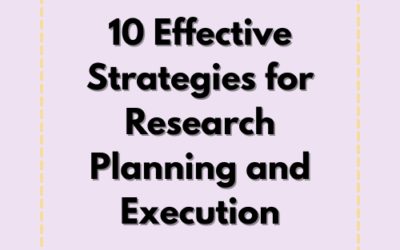Whether you’re a student, researcher, or professional writer, organizing your research is essential for productivity, clarity, and success. Without a clear system, it’s easy to lose track of sources, ideas, and data—leading to wasted time and frustration.
In this practical guide, we’ll walk through the steps to effectively organize your research so you can work smarter, not harder.
Why Organization Matters in Research
Before explaining into strategies, let’s briefly explore why organization is key:
- Saves Time: Quickly locate sources, notes, and drafts.
- Improves Focus: Clear systems reduce mental clutter.
- Enhances Quality: Better organization leads to more coherent arguments and insights.
- Avoids Duplication: Prevent revisiting the same information unnecessarily.
Step 1: Define Your Research Goals
Start by clearly outlining what you’re trying to achieve. Ask yourself:
- What is the purpose of my research?
- Who is my audience?
- What kind of information am I looking for?
A well-defined goal helps you stay focused and filter out irrelevant information early on.
Step 2: Choose the Right Tools
There are many tools available to help you organize your research. The best one depends on your workflow, preferences, and project scope. Here are some popular options:
For Research Note-Taking:
- Evernote – Great for clipping web pages, adding tags, and organizing notes.
- Notion – Flexible workspace with databases, kanban boards, and templates.
- Obsidian – Ideal for creating a personal knowledge base using markdown files.
- Microsoft OneNote – Excellent for structured note-taking and collaboration.
For Citation Management:
- Zotero – Free, open-source tool that integrates with browsers and word processors.
- Mendeley – Combines reference management with social networking features.
- EndNote – More advanced (and paid), often used in academic settings.
For Task & Project Management:
- Trello – Visual task boards with cards and checklists.
- Todoist – Simple to-do list with priority tagging and reminders.
- Asana – Good for team projects with timelines and dependencies.
Choose tools that integrate well together and match your comfort level.
Step 3: Create a Systematic Filing Structure
Set up a consistent folder structure on your computer or cloud storage (e.g., Google Drive, Dropbox). Here’s a sample setup:
Use descriptive file names Author_Year_Title.pdf to make searching easier.
Step 4: Take Smart Notes
When taking notes, follow these best practices:
- Summarize Key Points: Avoid copying large chunks of text; instead, paraphrase and highlight relevance.
- Use Tags or Keywords: This makes it easier to search later.
- Include Citations: Always note where each idea came from to avoid accidental plagiarism.
- Link Ideas Together: Use backlinks (in tools like Obsidian) or cross-references to build connections between concepts.
Pro Tip: Try the Cornell Method for structured note-taking, or use mind maps to visualize relationships.
Step 5: Keep Track of Sources
Maintaining a comprehensive record of all sources is critical. At a minimum, collect:
- Author(s)
- Title
- Year of publication
- Publisher or journal
- DOI or URL
- Page numbers (if applicable)
Use a citation manager to automatically generate bibliographies and format citations in your preferred style (APA, MLA, Chicago, etc.).
Step 6: Review and Refine Regularly
Organizing research isn’t a one-time task—it’s an ongoing process. Schedule regular reviews to:
- Delete redundant or irrelevant material
- Reorganize notes as your understanding evolves
- Update references and citations
- Back up your work
This keeps your system clean and efficient.
Step 7: Stay Consistent
Consistency is the secret sauce of effective organization. Develop habits such as:
- Saving every source immediately
- Taking notes in the same format
- Reviewing progress weekly
- Using the same tagging system across all platforms
Even small inconsistencies can snowball over time, making your system less reliable.

Final Thoughts
Organizing your research doesn’t have to be overwhelming. With the right tools, system, and mindset, you can turn chaos into clarity. Remember, the goal isn’t perfection—it’s progress. Build a system that works for you , and adjust it as needed.
Happy researching!
Let The Writeler Co. support you in achieving academic and professional excellence! Whether you need assistance with research writing, proofreading, editing, or data analysis, our expert team is here to help.
📩 Email us today or 📲 message us on our Facebook account to get started. Let’s make your work shine!





0 Comments